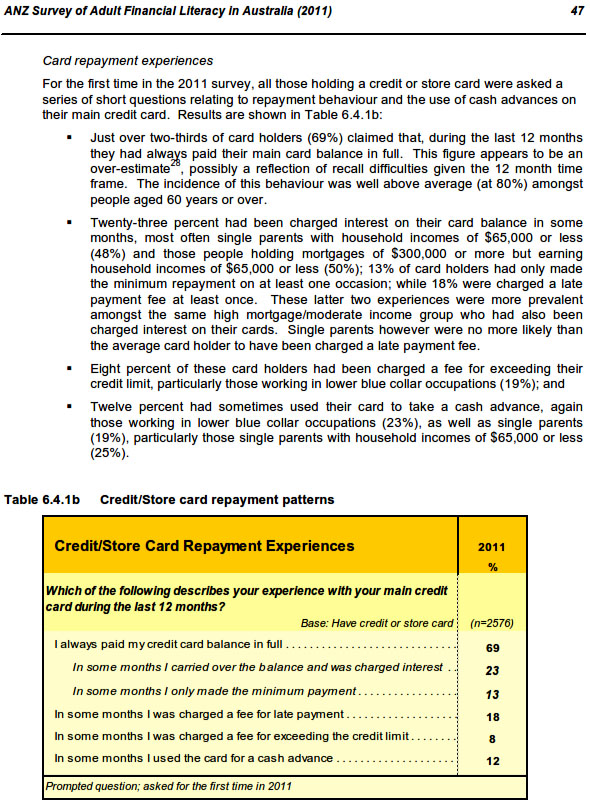Financial literacy in the Australian context
- extract from ASIC's 'National Financial Literacy Strategy 2014–17'After the global financial crisis, many Australians are making financial decisions in a continuing atmosphere of relative economic uncertainty.16
Financial Counsellors and community workers advise that, for some people, even a small change in circumstances may cause financial difficulty, making it important to stay on top of debt, avoid unsuitable financial products and build a protective buffer of savings.17
Since the release of the 2011 Strategy, there have been rapid changes in technology and an increasing shift towards delivery of financial products and services through online and mobile platforms.18 This presents both opportunities and challenges for consumers, investors and service providers.
Financial products and markets are growing in complexity, as is the volume and range of information intended to aid or influence consumer decisions. For some, this can make it harder to assess the validity of information and may result in a feeling of being overwhelmed by too many choices.19
Greater complexity may increase the likelihood that some retail investors could have insufficient understanding of the risks associated with different products to enable them to make informed investment descisions.20
Time pressures and over- or under-confidence may also cause consumers to disengage from the process of decision-making or make rushed, poorly thought-out choices.21
Behavioural indicators
Research tells us that Australians have differing attitudes to money and varying levels of financial knowledge and proficiency.22 People may perform well on some aspects of financial literacy but poorly on others.23
The latest report on Australians’ financial literacy, the 2011 ANZ Survey of Adult Financial Literacy in Australia (ANZ Survey), is the fourth in a series of national snapshots conducted by the ANZ Banking Group since 2003.24
The 2011 ANZ Survey identifies five behavioural indicators of financial literacy:25
-
Keeping track of finances: including monitoring account statements and keeping track of household expenses ..
-
Planning ahead: including checking and using insurance, retirement income planning and using financial advisers ..
-
Choosing financial products: including understanding investment risk, and shopping around for financial products and services ..
-
Staying informed: including the extent of use of financial information and tools, and ..
-
Financial control: including control of general financial situation and debt, and ability to save money.
Many people underestimate the extent of their own knowledge gaps. So their behaviour, even in simple day-to-day money management, may not be consistent with how confident they are in their abilities. As discussed on page 8, individual financial decision-making behaviour may also be influenced by personal or environmental circumstances.
